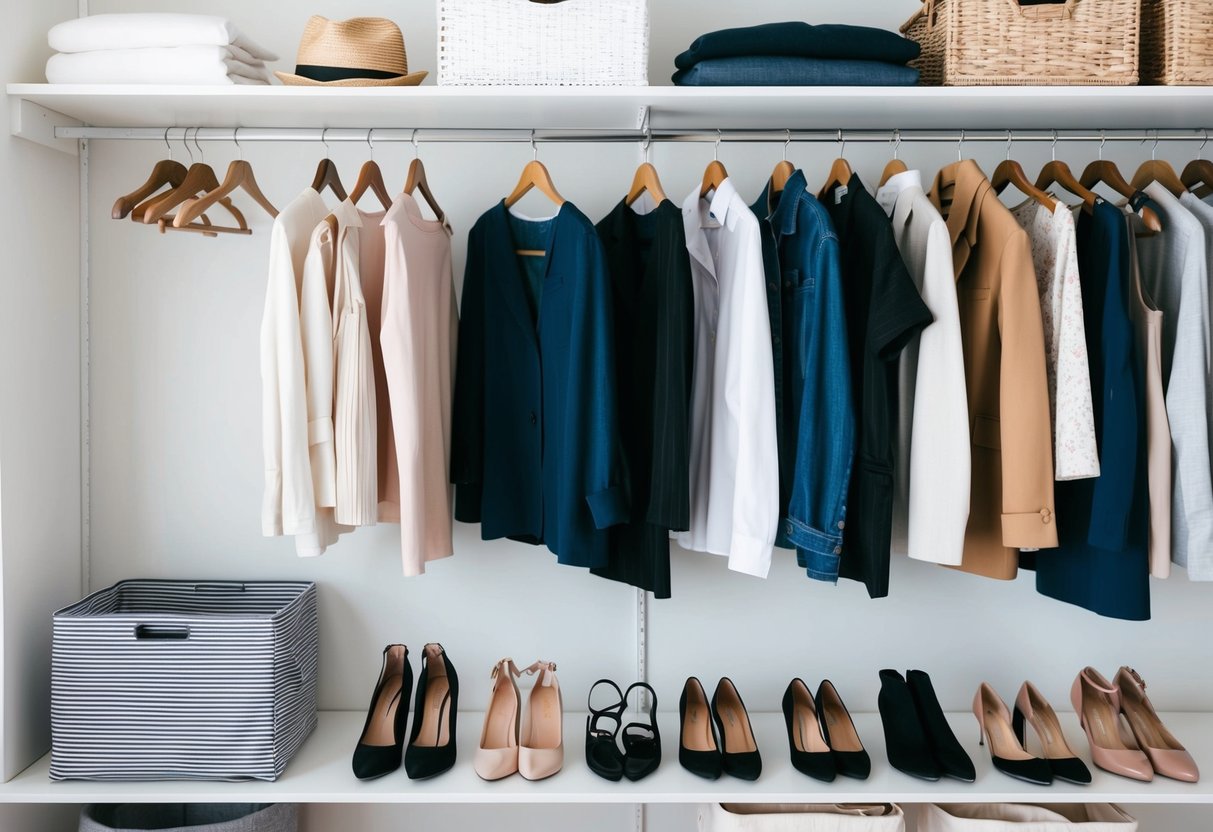
Fundamental Tops and Bottoms
A white button-down shirt is essential due to its adaptability. It works for both business and casual environments, making it a staple for anyone aiming to build a versatile wardrobe. Paired with jeans or tailored pants, this garment can transition from a professional meeting to a weekend outing effortlessly.
Classic jeans remain a fundamental item as well. Known for their comfort and durability, they can be styled in numerous ways, from casual to smart-casual. Pairing them with a blouse or a blazer changes the tone of an outfit instantly, showcasing their adaptability and versatility.
The Role of Color and Texture
Color and texture play essential roles in enhancing the versatility of minimalist garments. Using neutral palettes and incorporating varied textures allows for creative outfit combinations without sacrificing simplicity.
Mastering the Neutral Palette
A neutral color palette provides the foundation for versatile minimalist garments. Shades like white, black, gray, and beige serve as a timeless core, allowing for effortless mix-and-match outfits. These colors blend seamlessly, offering a cohesive look suitable for various occasions.
Different hues complement each other, creating depth while maintaining the understated elegance typical of minimalist fashion. Subdued tones also stand up well to seasonal changes, enabling year-round wear.
Incorporating Patterns and Textures
Texture and pattern elevate minimalist wardrobes past their plain foundations. Introducing elements like ribbed knits, soft cotton blends, or silk can add depth and interest to the attire. These textures play on familiar neutrals to create dynamic visual contrasts and tactile experiences.
Carefully chosen patterns, such as simple stripes or subtle checks, keep the aesthetic clean. These details maintain cohesion in the outfit while subtly enhancing the visual landscape of minimalist fashion.
Strategic Essentials: Maximizing Outfit Options
Choosing the right pieces is crucial for creating a wardrobe that offers flexibility and numerous combinations. Essential strategies such as layering and mixing versatile pieces extend a wardrobe’s functionality effectively.
The Power of Layering
Layering adds depth and adaptability to any wardrobe. Incorporating simple, neutral-tone tops, lightweight sweaters, and jackets allow for seamless transitions between temperatures and occasions. A carefully chosen cardigan can transform a daytime look into something suitable for a night out. In cooler months, scarves and hats serve both fashion and function, enhancing the ensemble while providing necessary warmth.
Strategically pairing tops with different outerwear can vastly expand an outfit’s versatility. Well-fitted undershirts paired with button-down shirts elevate both comfort and style. Layering should balance aesthetics and practicality, creating outfits that are both visually appealing and functional.
Mix and Match for Endless Combinations
Mixing and matching integral wardrobe pieces plays a significant role in maximizing outfit options. Basic items like plain shirts, tailored trousers, and neutral skirts serve as blank canvases. They enable countless outfit permutations when paired with statement pieces such as bold jewelry or patterned scarves.
Each item should complement several others, ensuring maximum flexibility. A versatile dress can be paired with different jackets and accessories, making it suitable for work or social gatherings. This strategy simplifies decisions, reduces closet clutter, and optimizes wardrobe utility, allowing for creativity and style every day.



